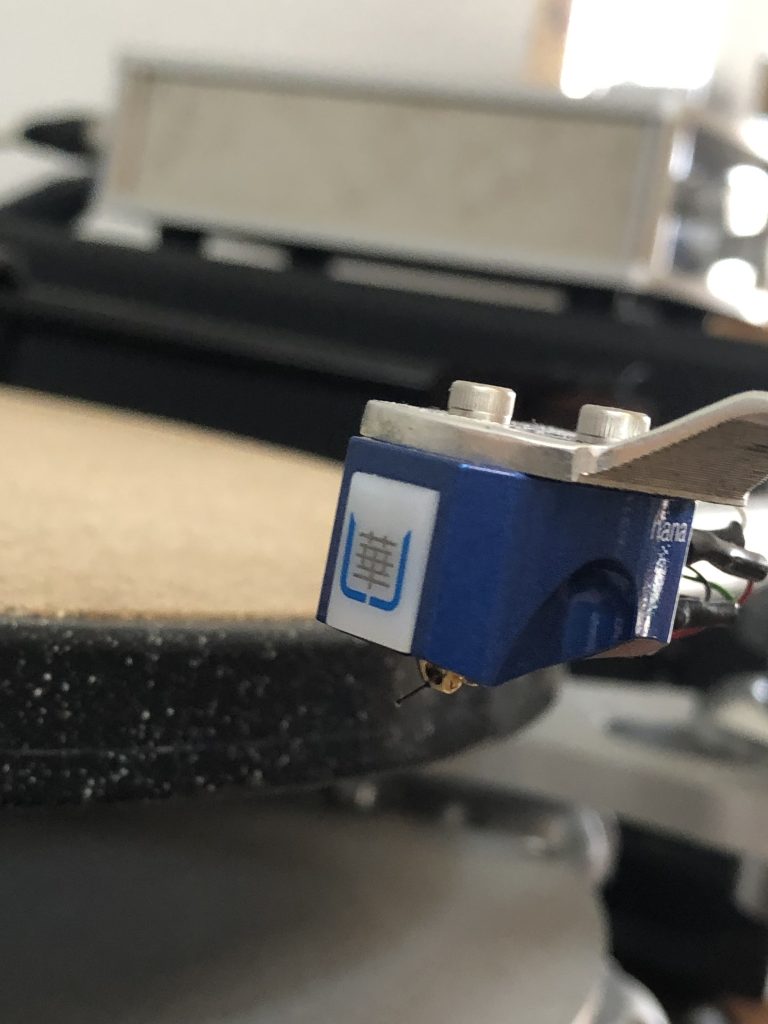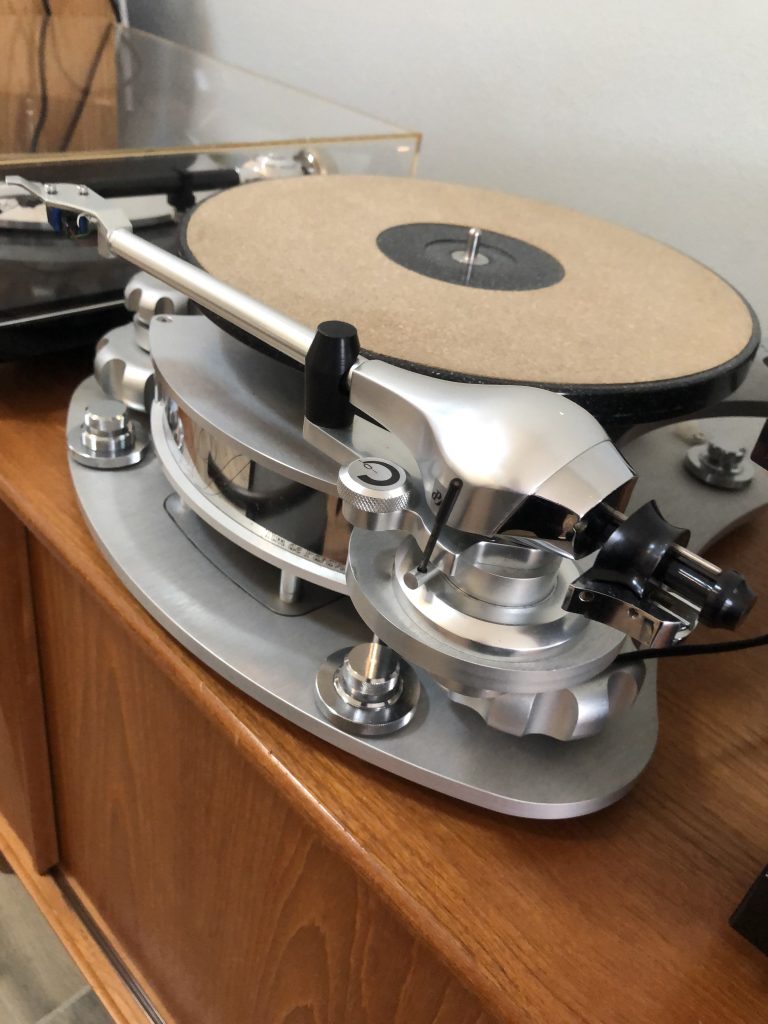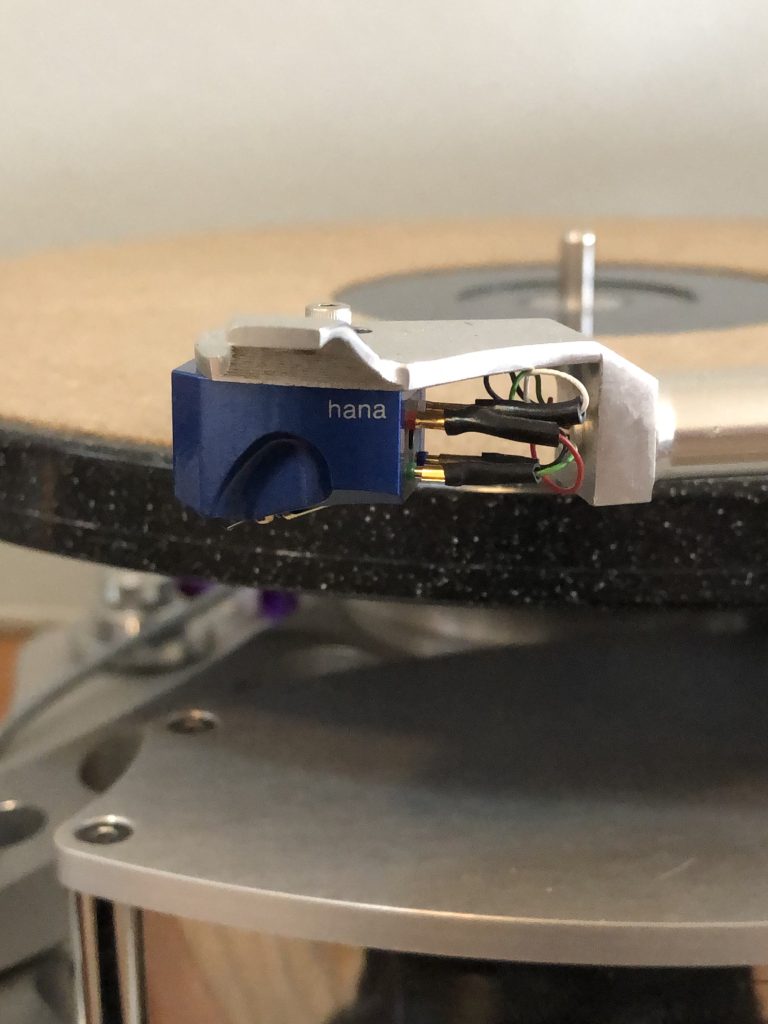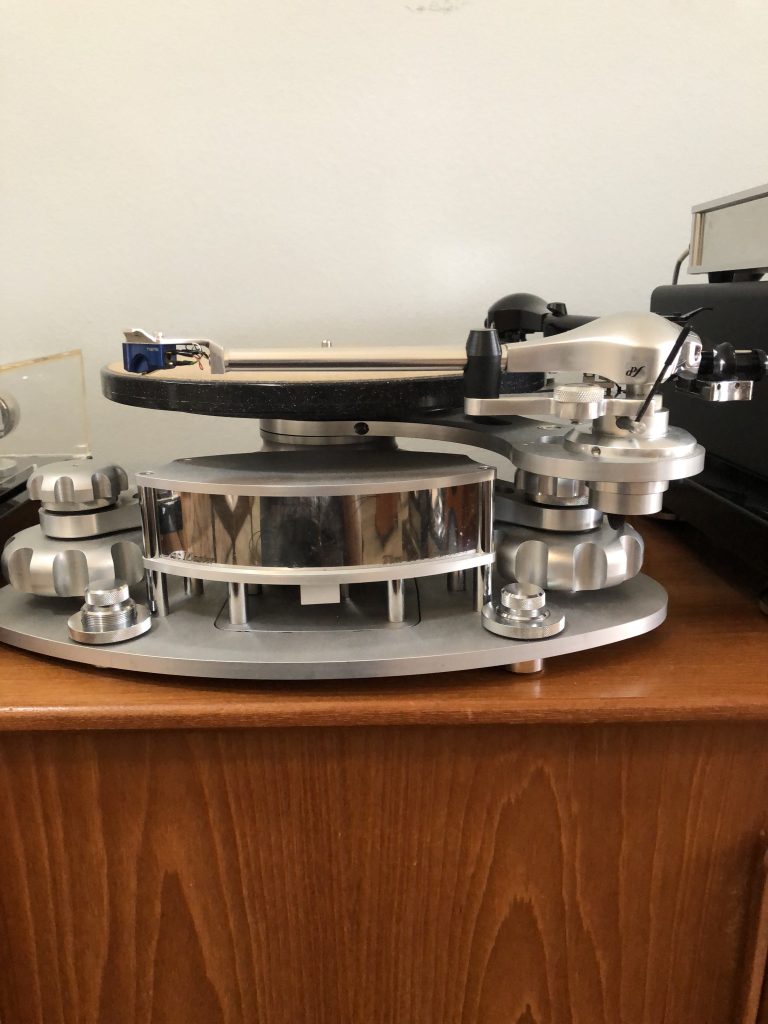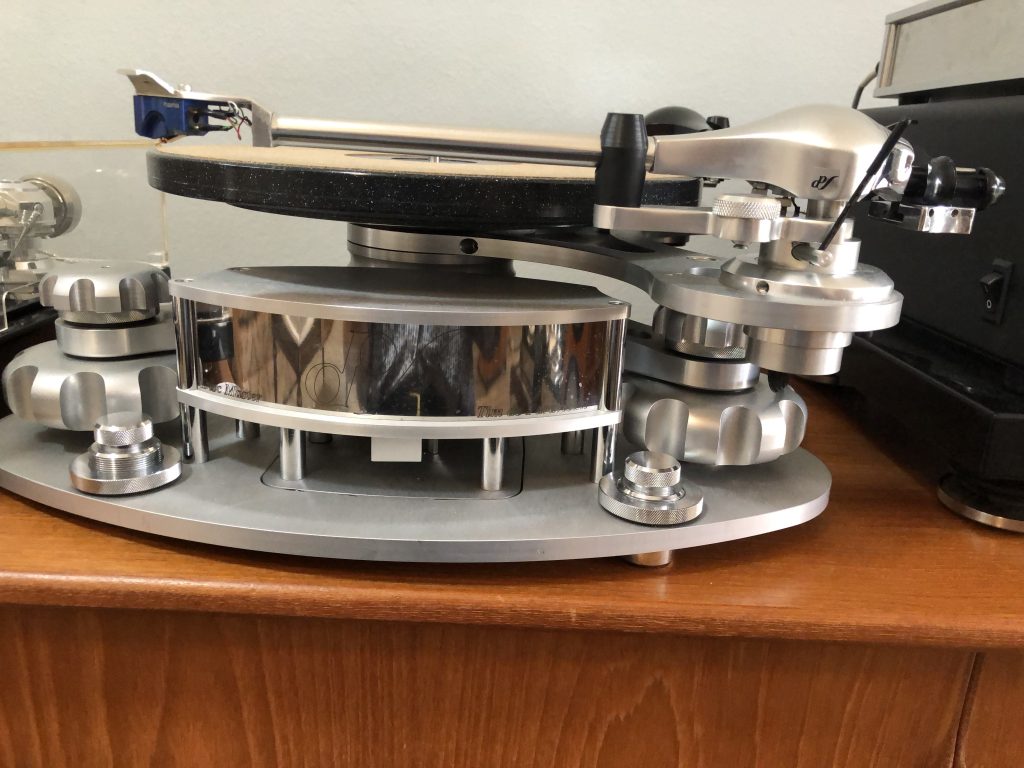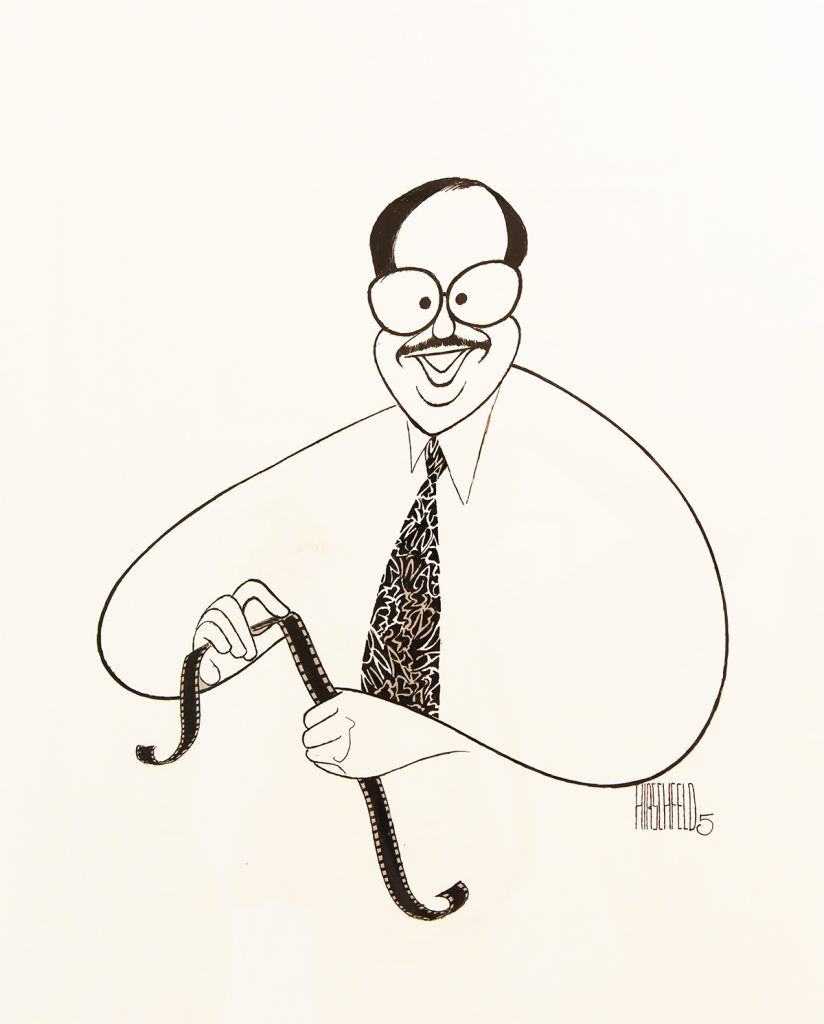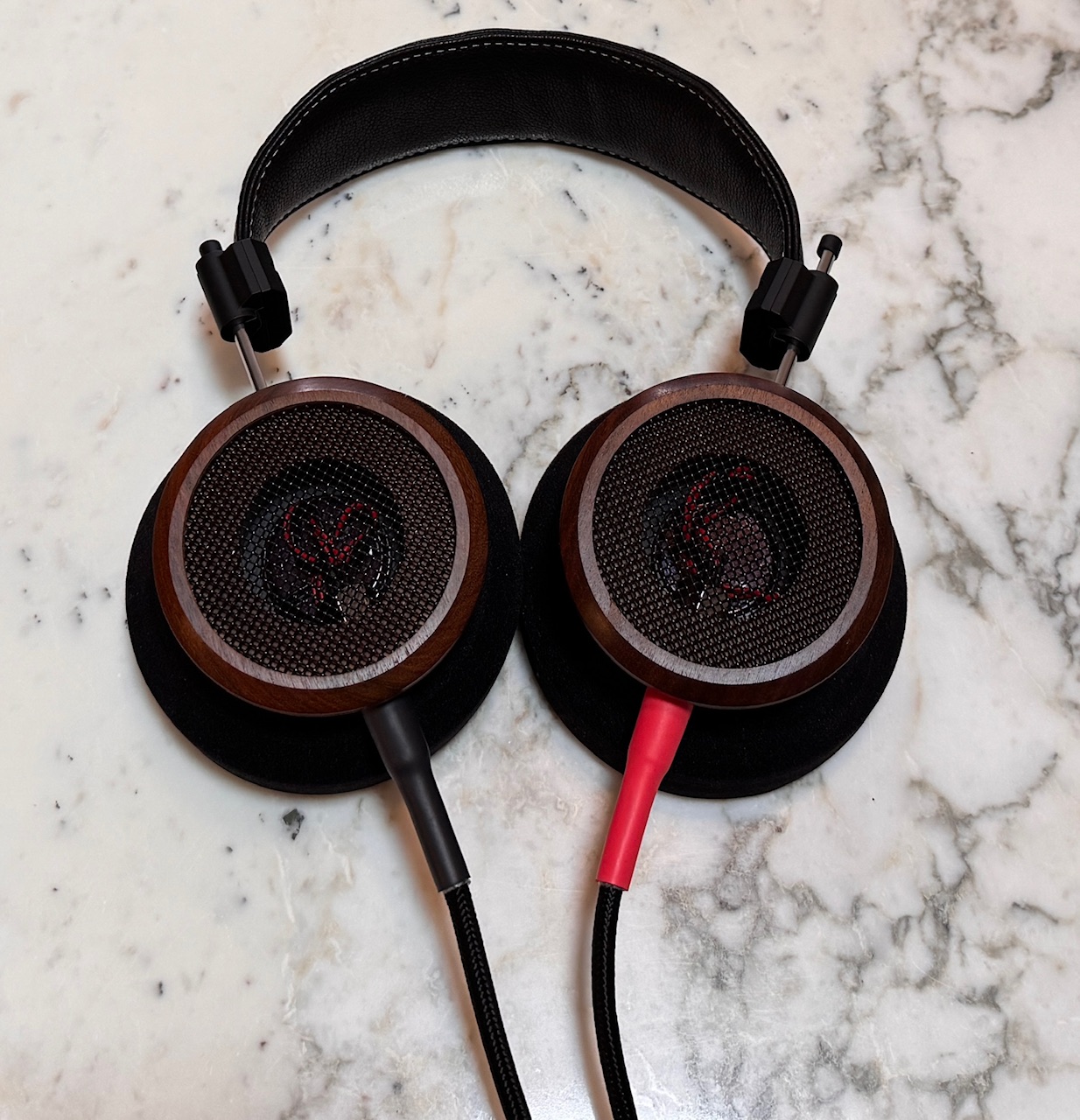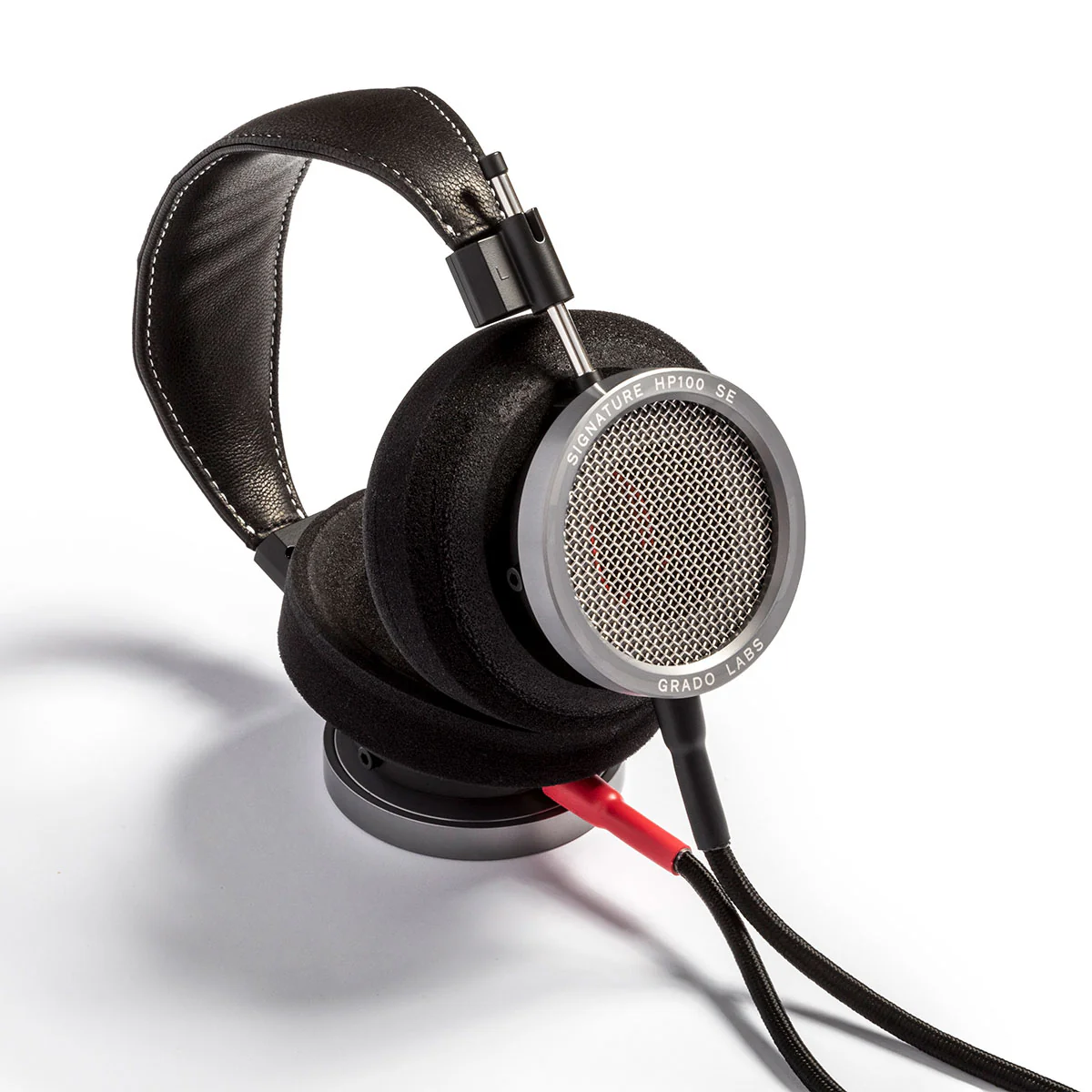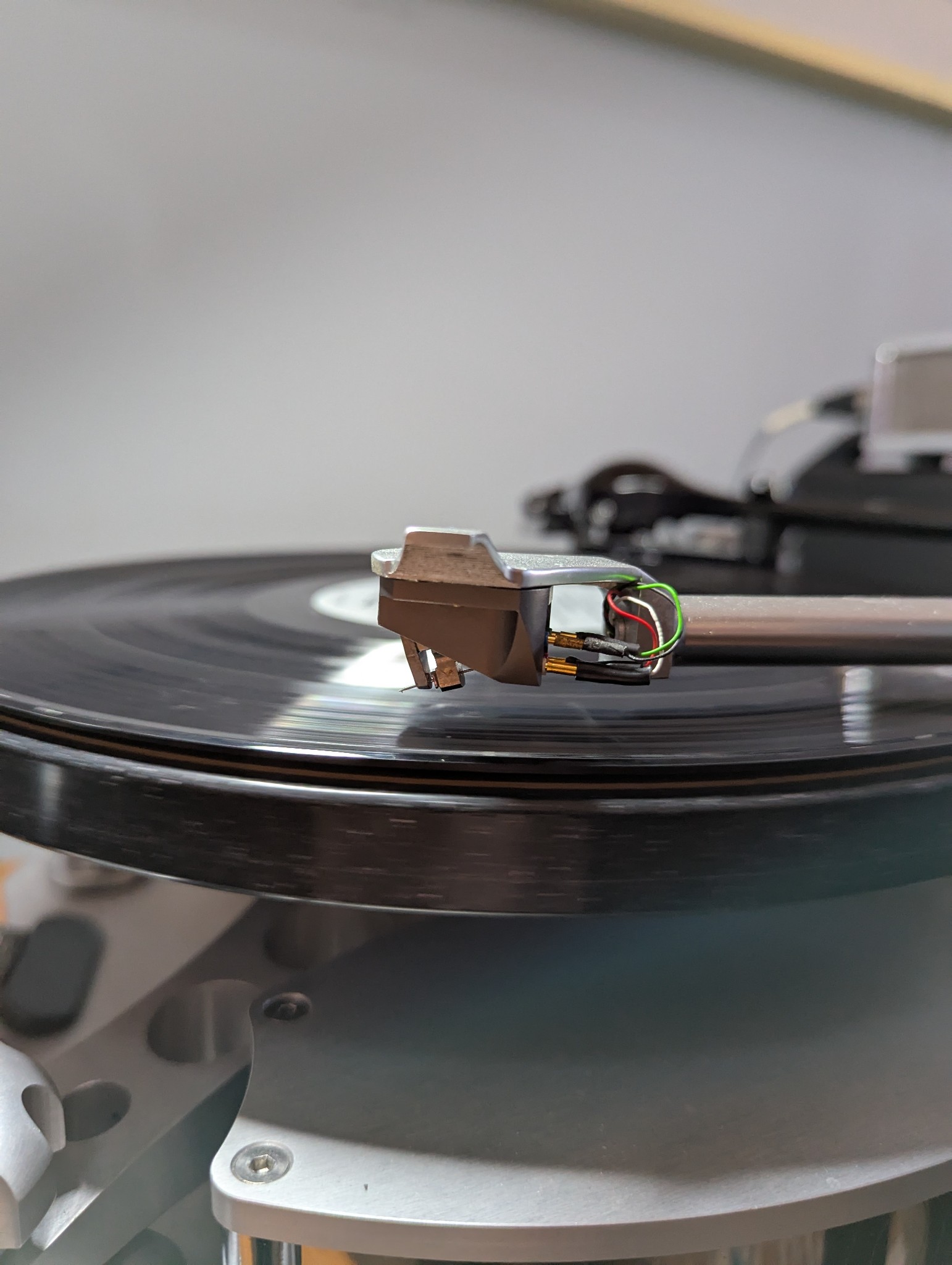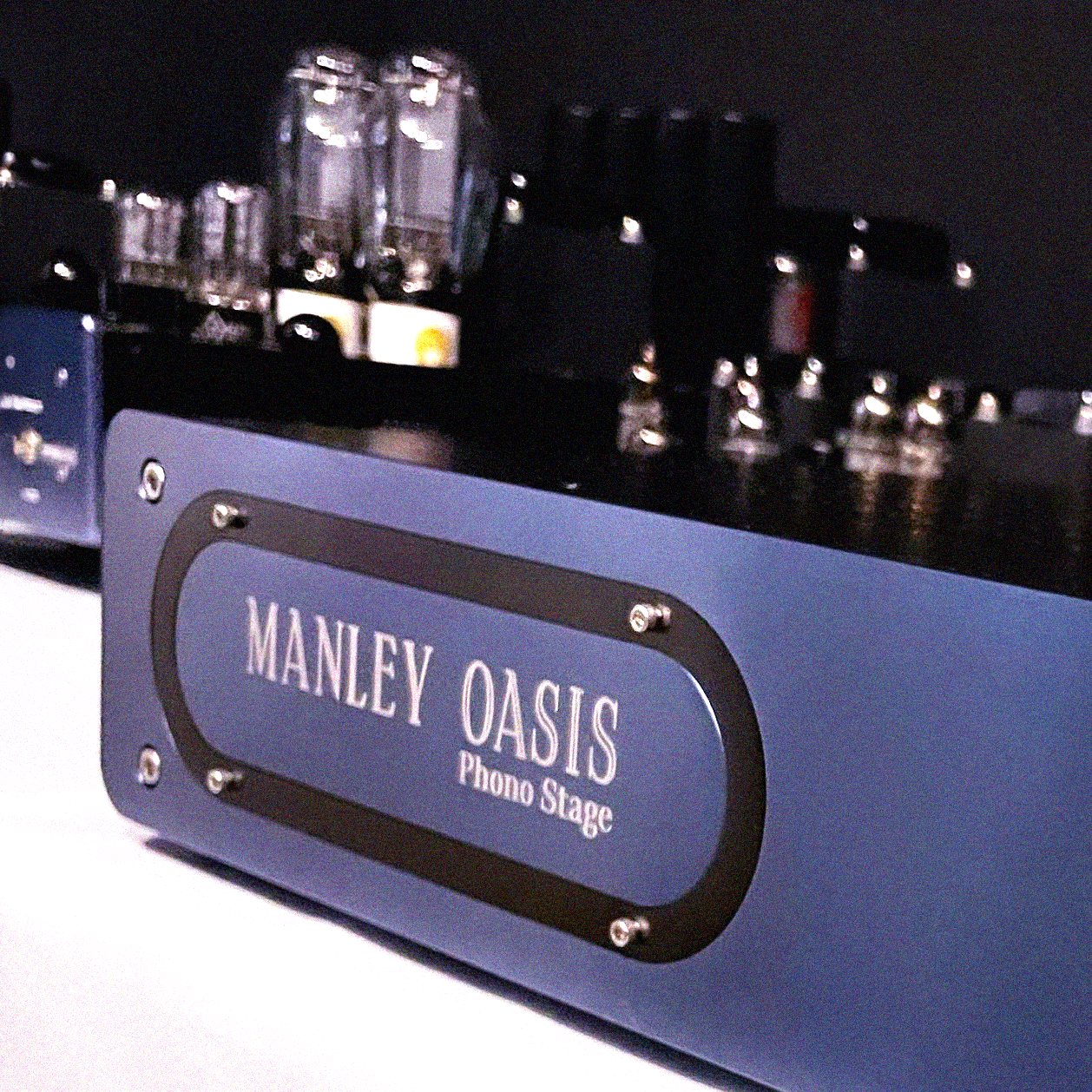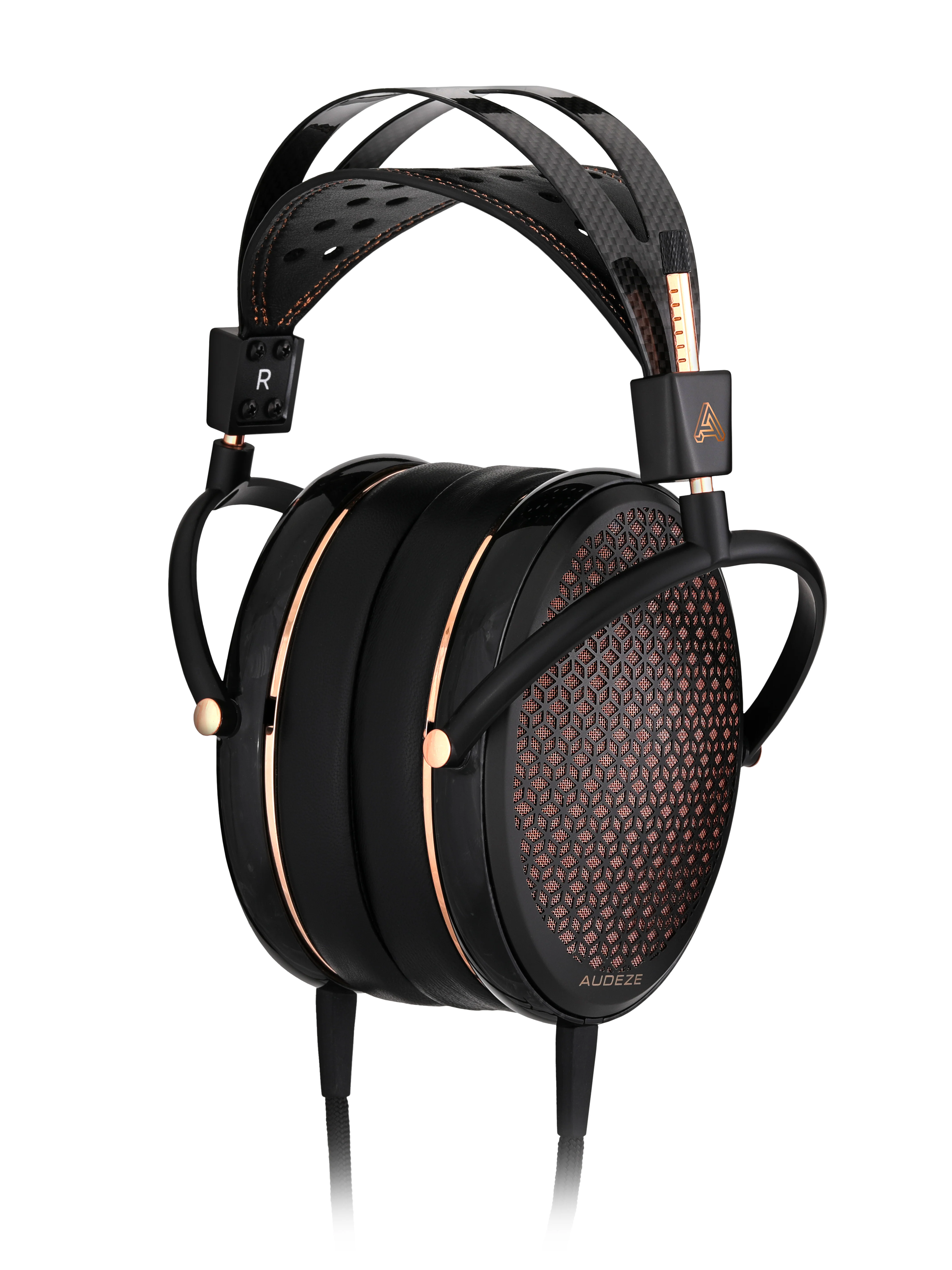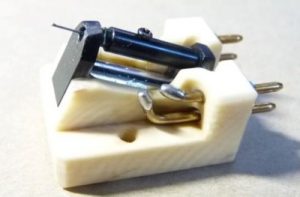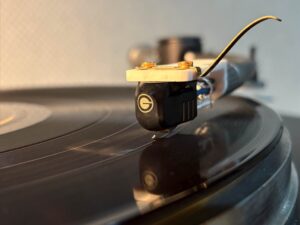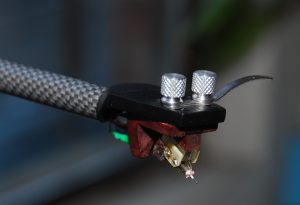In my search for the Sweetheart of the most popular phono cartridge lines, offering the highest value and top performance for the price, the Hana series of cartridges brings a powerful entry. New to the market is the Hana Umami Blue Moving-Coil Cartridge also created by the brilliant Maseo Okada of Excel Sounds in Japan, and distributed here by Musical Surroundings. With lots of trickle-down technology and a few inert cost savings from lesser Hana designs, the beautiful Umami Blue is their desired Sweetheart.
Utilizing the Alnico magnet generator of the Hana ML, and the stylus, cantilever, and other features of the pricier Umami Red, we have a very exciting offering for substantial savings in cost. I spoke with esteemed members of the Los Angeles and Orange County Audio Society, an electrical engineer, and a physicist, who each touted the advantages of an Alnico magnet assembly versus Samarium Cobalt. The Alnico magnet has a broad magnetic beam and is permanently very powerful. They felt it was ideal for a moving coil cartridge like the Blue.
In my listening, I noticed how powerful the Blue sounded. At .4mV output, the Blue is more a medium output MC than a low-output cartridge. I do not have the gear to measure cartridge output. After dealing with the Blue, I came to the conclusion that .4mV is probably conservative. I had to pad the input on my phono section by 6dB in order to keep my input meters from pegging. This is a high-class problem because the signal-to-noise ratio was outstanding and the background was jet black.
Reference System
My current associated system
- E.A.R. Disc Master Magnetic Drive turntable with Helius Omega tonearms
- Jorma Origo RCA interconnects
- E.A.R. 912 Professional Control Preamplifier with built-in tube MC and MM phonostages
- UIT Audio balanced interconnects to two E.A.R. 890 Tube amplifiers set to monoblock
- Jorma Origo Bi-wire Speaker cables to Marten Bird Speakers
- Bybee Golden Goddess Filters installed on the tweeter and midrange Marten Bird drivers
- Kubala-Sosna Elation powercords on the amplifiers
- Jorma Prime powercord on the preamplifier
- Ten Outlet, PowerBar 10 AC Power Supply from Stein Music of Germany
- The Perfect Music Booster (PMB) Stick from UIT Audio in the AC power supply
- Listening Room Number 1: 20' x 40' with slanted ceiling 12' to 25'
Umami Blue Specifications
Nude Microline Stylus bonded to a solid Boron Cantilever
- Frequency response: 15 to 50,000Hz
- Output balance: 0.5dB/1kHz
- Channel separation: 30dB/1kHz
- Coil impedance: 8Ω at 1000 HZ with 0.4mV output
- Load impedance: >80 Ω
- Tracking force: 1.8 grams
- Weight: 10.8g
- Warranty: 2 Years
Performance/Technical Details
I set the phono input impedance to 130 ohms, which was the closest available to the 80-ohm minimum. Higher impedances took the life out of the cartridge and my available 65-ohm setting did not sound linear. At 130 ohms, I needed to pad down the input 6dBs to get flexibility from the output volume control. I do not believe this will be a problem with most phono stages as the stronger output will be a boon to just about any phono stage under $5000.
The tracking ability of the Blue is perfection. It would track my meanest Mercury LPs and boldest Telarcs. In my 55 years as an audiophile, I have not played a cartridge that outperformed the tracking ability of the new Blue.
The Blue is designed to dampen itself with a special inlay in the face of the cartridge and mounting holes in the cartridge body for firm attachment to the headshell. I was impressed by the selection of mounting hardware supplied with the cartridge, assuring a perfect headshell fit. The heavily lacquered duralumin cartridge body is very impressive. All these tweaks added substantially to the amazing quiet spaces between images and the lack of grain and noise which subtly blur fine definition. The cryogenic treatment of key inner parts adds to the low internal noise as well.
This is one quiet cartridge with literally some of the lowest noise and hum. I was able to boost the volume without playing the cartridge to nearly full volume without noise or hum. The Blue demonstrates extraordinary construction and attention to detail near the top of the heap of great moving coil designs.
I found the VTA was best set at dead level on a 170/180-gram LP. It was most musical and relaxed. You will need a tonearm that adjusts for overall height or place spacers at the headshell as the Blue has a somewhat shorter profile than many other MC cartridges. I had no problem placing the Blue in position with the Helius Omega Tonearm, which requires loosening a set screw for height adjustment.
The Blue needs a full 100 hours of playtime to reach optimum performance. I used an LP I do not like and just played the cartridge with the system off. I let the cartridge remain on the closed groove at the end of the LP for 24 hours then did it again. Four days later you are ready to go. You will not damage the stylus as a diamond is much harder than vinyl. For review purposes only, I put an extra day of casual listening time on the cartridge to make sure this baby was ready to go and the VTA had not changed. Remember: level is the key to the best sound quality and overall performance with the Blue.
The Music
The Blue is very linear from top to bottom, with a complete absence of any specific frequency emphasis. An honest and neutral cartridge, it had virtually no signature of its own as I played very different LPs.
The highs were smooth and sweet when the LP was sweet. The upper frequencies were also relaxed, but with plenty of sparkle. The Blue had lots of air and space with a broad soundstage. With tons of depth and superb image height, LPs often came to life with master-tape-like sound. I really enjoyed the high-band performance of the Blue, as it made the music sound more like a performance rather than a recording. This is extraordinary for a cartridge in this price range. I can name several MC cartridges at $1000-2000 more that romanticize or blur the highs.
The midrange performance of the Blue was outstanding and neutral with a bullet. Every reference LP I played just sang with its unique sonic signature and vibe. When an LP was delicious and mellifluous, so was the Blue. When the LP was exacting and closely mic'd, so was the Blue. When the LP was bombastic and powerful, so was the Blue. It performed as well as cartridges costing significantly more, with excellent definition. It only yielded some textural shading within instrumental and vocal images to more expensive designs. The Blue was so satisfying, I often forgot about reviewing and just listened for enjoyment.
The bass range was very, very deep and well-layered. The Blue was never bloated or less than excellent in reproducing the lows and super lows. Here the neutrality of the Blue enhanced the reality of the bass, and gave you a window into the actual performance. Nothing in this range was overcooked unless the LP was poorly cut. The Blue's top-notch tracking ability blasted through some major bass passages that are not clean or clear on some very expensive top cartridges I have auditioned.
Imaging! This is the bane of phono cartridge performance. Either a cartridge is excellent at bringing the listener tight realistic images or not. Either the space between images is realistically silent or not. J. Gordon Holt once said that in the absence of visual cues, auditory cues have to be that much better. The Blue is an imaging champion. It yielded tight, well-defined, and realistic images without fail. On the 45 RPM Acoustic Sounds Kind of Blue reissue, you could draw a circle around each instrument with the Blue. Miles Davis was in his own space with the broken lip sound clearly definable. Coltrane is near a wall while Cannon Ball Adderly is out in the open studio. This is near cutting-edge cartridge performance from a high-value Hana offering, a true sonic Sweetheart.
Further Thoughts
The Hana Umami Blue is a deliberate trickle-down design utilizing the best and most cost-effective elements of the Hana Cartridge line. It is an unqualified success, and, as a bonus, a moving coil design. I do not know why so many other cartridge manufacturers invent strictly from the bottom up instead of the top down. I do know that dealers are begging for more and more expensive speakers and electronics to go with them to make more money. That is all fine, but this race to the top ignores the younger audiophile who should be able to afford very fine products for a reasonable cost. My three reference cartridges in my Number One system retail for $26,000. This will not be typical for the vast majority of audiophiles under 40. This is why I am so enthusiastic about the excellent Hana Umami Blue offering giving those audiophiles 80-85% of the best moving coil designs at a truly reasonable price.
Summary
The Hana Umami Blue Moving-Coil Cartridge is a winner! With top-notch imaging and cutting-edge neutrality, this jewel often recreates the performance of master tape sound with your best LPs. A tracking champ, the Blue sails through the toughest bass and midrange bombast with ease, at a reasonable 1.8 grams tracking force. With the body, finish, and many of the features of the top-of-the-line Hana Umami Red, the Blue is a super high value for audiophiles looking for a cost-effective moving coil cartridge. With an output that will work well with any phono stage with MC inputs, the Blue will bring joy to music lovers and audio fanatics alike. I highly recommend the Hana Umami Blue Moving-Coil Cartridge as the Sweetheart of the Hana cartridge line and the world of moving coil cartridges alike.
A P.S.
While enjoying Borodin’s Second Symphony on an RCA Classic Records reissue, I found myself wishing for a bit more luster and romance from the strings with the Hana Umami Blue Moving-Coil Cartridge. This recording has it in spades, as Bernie Grundman mastered it on an all-tube chain when cutting the lacquer.
I then attached my Aesthetix ABCD-1 Demag to the tonearm cables and gave the Blue three treatments. I then replayed the Borodin LP. Holy Moly! I heard a significant increase in definition and richness particularly in the string tone. The improvement was not subtle!
Therefore, I heartily recommend a demag treatment every 150 hours to the Blue to receive 100% of what this excellent cartridge is capable.
Hana Umami Blue Moving-Coil Cartridge
Retail: $2500
Distributor
Musical Surroundings
510.547.5006




